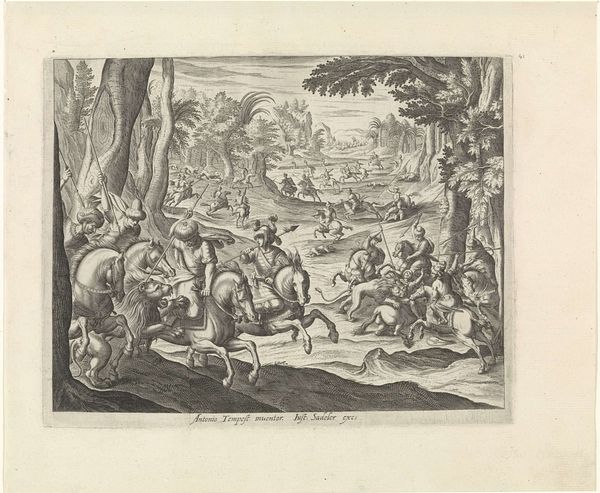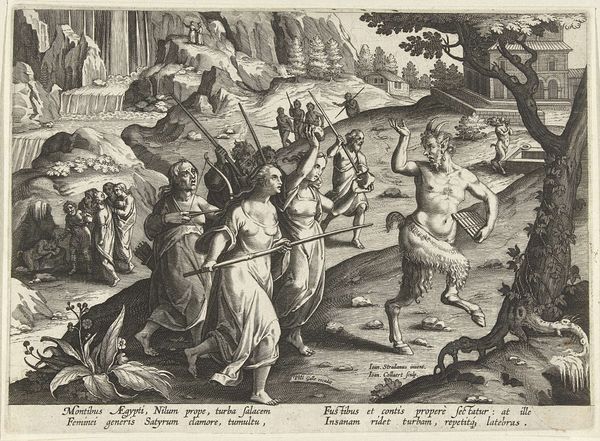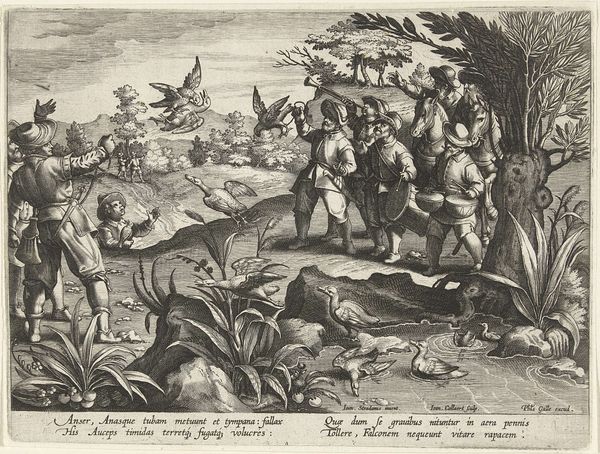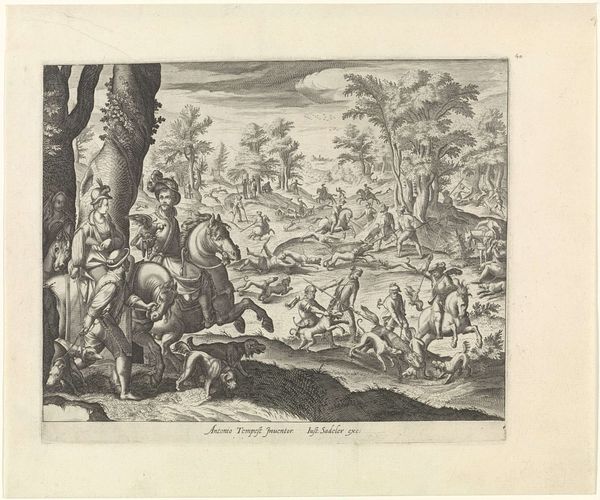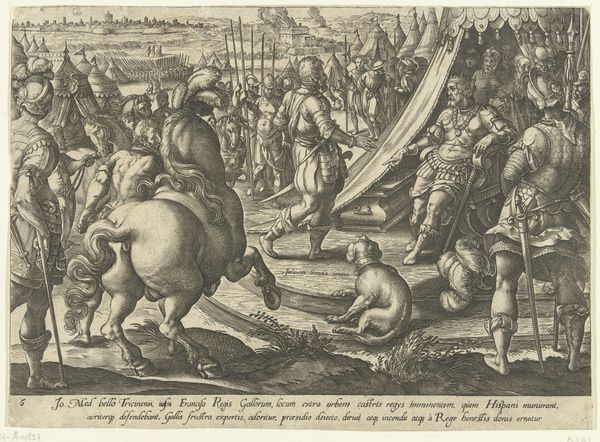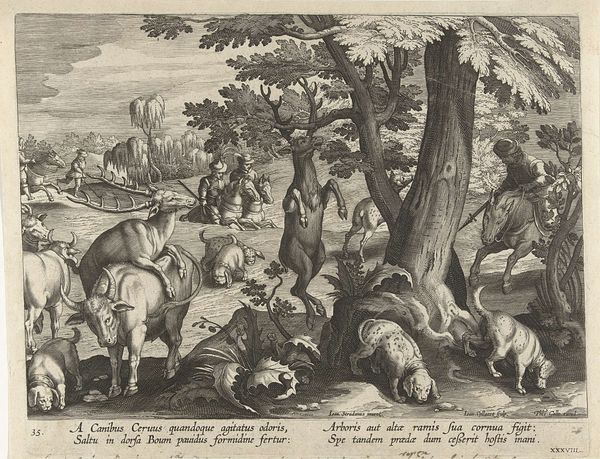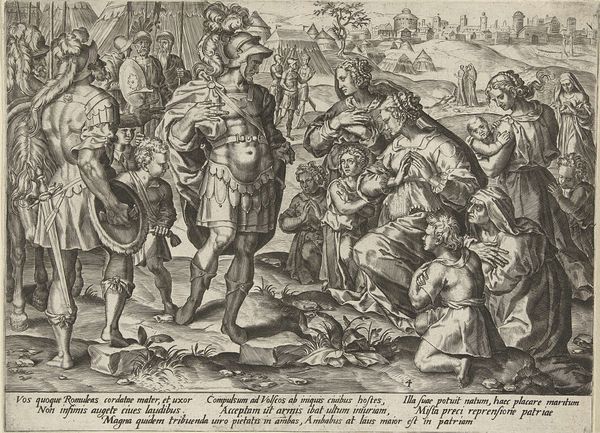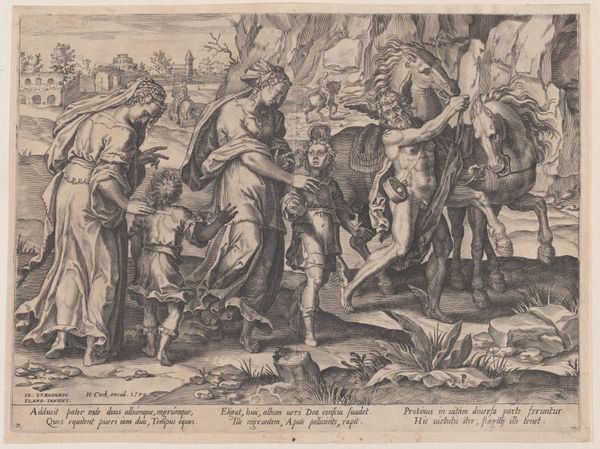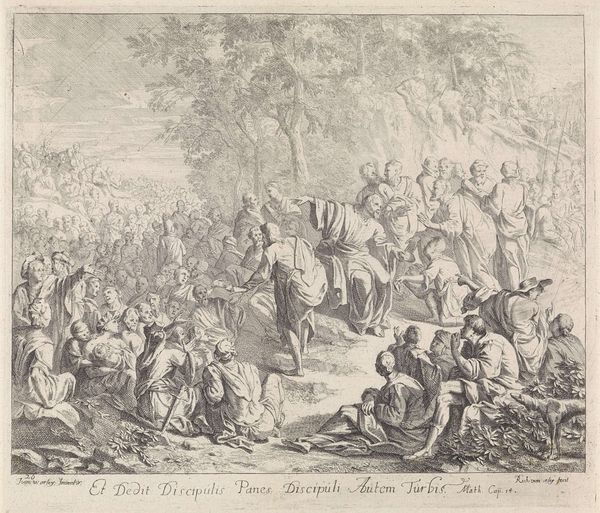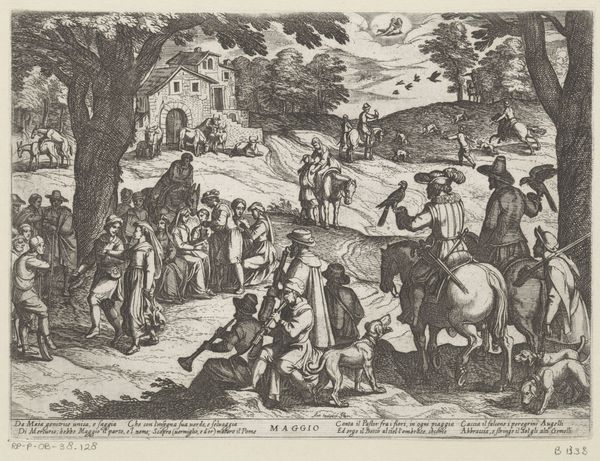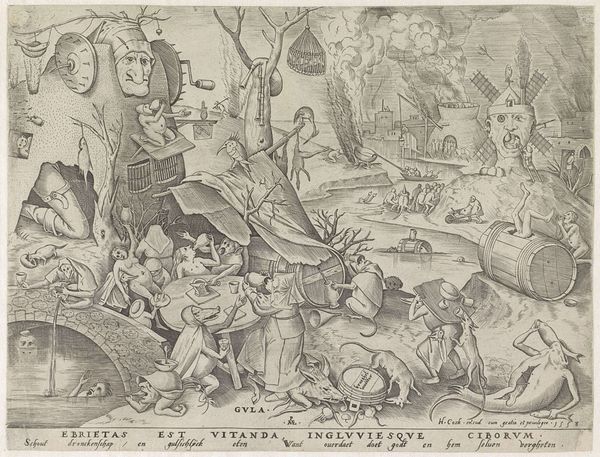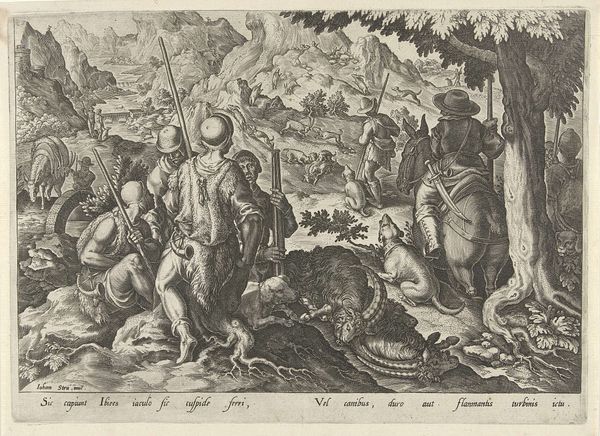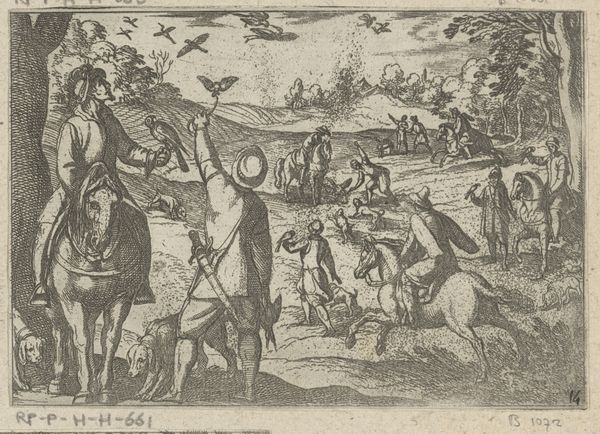
Dimensions: height 222 mm, width 297 mm
Copyright: Rijks Museum: Open Domain
Editor: This is "An Ambush Against Giovanni de' Medici Thwarted," an engraving by Hendrick Goltzius, made sometime between 1576 and 1583. The sheer density of figures and lines is astounding, it looks like a chaotic scene. It definitely grabs your attention, what do you think makes this work so visually powerful? Curator: The power, I suggest, arises from the manipulation of line. Observe how Goltzius uses hatching and cross-hatching, the very texture of the lines creating tonal variation. Light and shadow define form and drama across the print, creating a chiaroscuro effect within a monochrome medium. Consider the interplay of foreground, middle ground, and background: the receding planes constructed via meticulously applied line. Do you note the variation in line weight and its impact on the dynamism of the composition? Editor: I do now. The lines get finer as they recede. Is that how he creates the sense of depth? It’s like a map and a battle scene all in one. Curator: Precisely. Goltzius's mastery over the burin allows him to generate both a palpable sense of spatial depth and of frenetic energy, qualities crucial to conveying the dynamism of battle. Note, too, how the density of line and figure concentrates our focus onto certain areas of the composition. Where do you find your eye drawn to, and why do you believe this is so? Editor: I’m drawn to the main figure on horseback, I think the lines are most defined there. All that detail leads my eye. It's interesting how such detail in a printed work creates this focal point. Curator: Indeed. Goltzius understood implicitly how the deployment of formal elements directs the viewer's gaze and, accordingly, the generation of narrative meaning. This careful attention to form, even within the bounds of printmaking, transcends the purely representational, thereby arriving at true artistic expression. Editor: That's so well put. I hadn't thought of the "directing of the gaze" in such a structured way before. It's amazing what a close look can reveal. Curator: Indeed. We are often prisoners of our initial reactions, and need tools to access and clarify our analysis and evaluation.
Comments
No comments
Be the first to comment and join the conversation on the ultimate creative platform.
